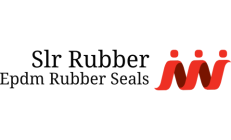Aluminum rubber seals, also known as aluminum-rubber gaskets or seals, play a crucial role in various industries where the prevention of leaks, contamination, or the protection of sensitive components is essential.
Aluminum rubber seals, also known as aluminum-rubber gaskets or seals, play a crucial role in various industries where the prevention of leaks, contamination, or the protection of sensitive components is essential. These seals are meticulously engineered to provide a reliable and durable barrier between different surfaces, ensuring a tight and secure fit.
-
Material Composition:
- Aluminum: The use of aluminum in these seals offers several advantages. Aluminum is lightweight, corrosion-resistant, and possesses excellent thermal conductivity. This makes it an ideal material for applications where weight is a concern, and resistance to environmental factors is crucial.
- Rubber: The rubber component of the seal is typically made from elastomers such as neoprene, silicone, or EPDM. These materials provide flexibility, resilience, and the ability to form a tight seal, even in challenging environmental conditions.
-
Key Features:
- Sealing Properties: The primary function of aluminum rubber seals is to prevent the ingress of liquids, gases, or contaminants between connected surfaces. This is critical in applications such as automotive, aerospace, and industrial machinery.
- Vibration Damping: The combination of aluminum and rubber also makes these seals effective in dampening vibrations and reducing noise, making them suitable for use in machinery and automotive components.
- Temperature Resistance: Aluminum rubber seals are designed to withstand a wide range of temperatures, ensuring stability and performance in both high and low-temperature environments.
-
Applications:
- Automotive Industry: These seals find extensive use in the automotive sector, sealing various components such as doors, windows, and engine compartments to prevent water, dust, and noise infiltration.
- Aerospace: In aerospace applications, aluminum rubber seals are utilized in critical areas such as aircraft doors, windows, and other access points to maintain air pressure differentials and prevent the entry of contaminants.
- Industrial Machinery: These seals play a pivotal role in industrial equipment where maintaining a sealed environment is essential for optimal performance and longevity of machinery.
-
Manufacturing Process:
- Precision Engineering: The production of aluminum rubber seals involves precision engineering to ensure the exact fit and functionality. Computer-aided design (CAD) and computer numerical control (CNC) machining are often employed in the manufacturing process.
- Bonding Techniques: The bonding of the aluminum and rubber components is a critical step. Adhesive bonding, vulcanization, or other specialized techniques are used to create a durable and resilient bond.
-
Quality Standards:
- Industry Regulations: Aluminum rubber seals must adhere to industry-specific regulations and standards to ensure reliability and safety. Compliance with standards such as ISO 9001 or industry-specific certifications is often a key consideration in the manufacturing process.
In summary, aluminum rubber seals represent a sophisticated solution for sealing and protection in diverse industries. Their combination of lightweight aluminum and flexible rubber properties makes them versatile, reliable, and indispensable in applications where maintaining a secure and sealed environment is paramount.

